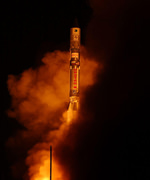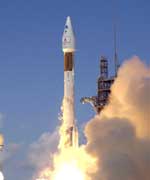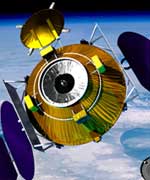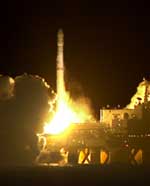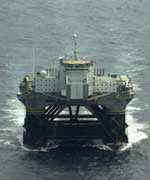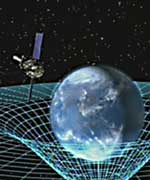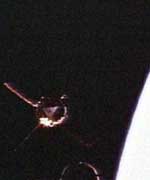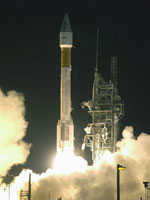The Sea Launch team is gathering and reviewing Telstar 18 mission data to understand the sequence of events that led to a premature shutdown of the Sea Launch Zenit-3SL upper stage during that mission earlier this week.
The Zenit-3SL launch vehicle lifted off from the equatorial launch site on June 28 at 8:59pm PDT, (3:59 GMT, June 29) as scheduled, deploying Loral?s Telstar 18 communications satellite into orbit with a separated mass of 4,640 kg (10,229 lb.). Based on preliminary flight data, all Sea Launch system flight parameters were nominal except that the upper stage of the launch vehicle shut down about 54 seconds prematurely, following the second of two planned burns of the upper stage. The early shutdown caused the satellite to be released into an orbit with an apogee of 21,605 km, some 14,000 km short of the 35,786 km target apogee.
Space Systems/Loral confirmed spacecraft signal acquisition by a ground station in Perth, Australia, soon after separation and reported that the satellite was operating normally. Loral Space & Communications has replanned the mission and, if successful, the satellite has sufficient on-board fuel to bring it to its final orbital position and meet or exceed its 13-year specified life. Loral also reported the Telstar 18 spacecraft has deployed its solar arrays and all systems on the spacecraft are functioning as designed.
The cause of the rocket?s upper stage premature shutdown is under investigation by an Energia-appointed commission. Sea Launch will also form an independent review board to evaluate all findings and confirm that any corrective actions associated with the upper stage performance on the Telstar 18 mission are complete, satisfactory and verified. At this point in time, Sea Launch is optimistic it will conclude the board?s investigation and complete two more launches this year, as originally planned.
Sea Launch remains highly confident in the robust capability of the Zenit-3SL system, including the upper stage. This component remains one of the premiere upper stages in the industry, with an overall success rate of approximately 97%.
Sea Launch Company, LLC, headquartered in Long Beach, Calif., and marketed through Boeing Launch Services ( www.boeing.com/launch ), is the world?s most reliable commercial heavy-lift launch services provider. This multinational partnership offers the most direct and cost-effective route to geostationary orbit. With the advantage of a launch site on the Equator, the reliable Zenit-3SL rocket can lift a heavier spacecraft mass or provide longer life on orbit, offering best value plus schedule assurance. For additional information and images of this mission, please visit the Sea Launch website at: www.sea-launch.com
Original Source: Boeing News Release

